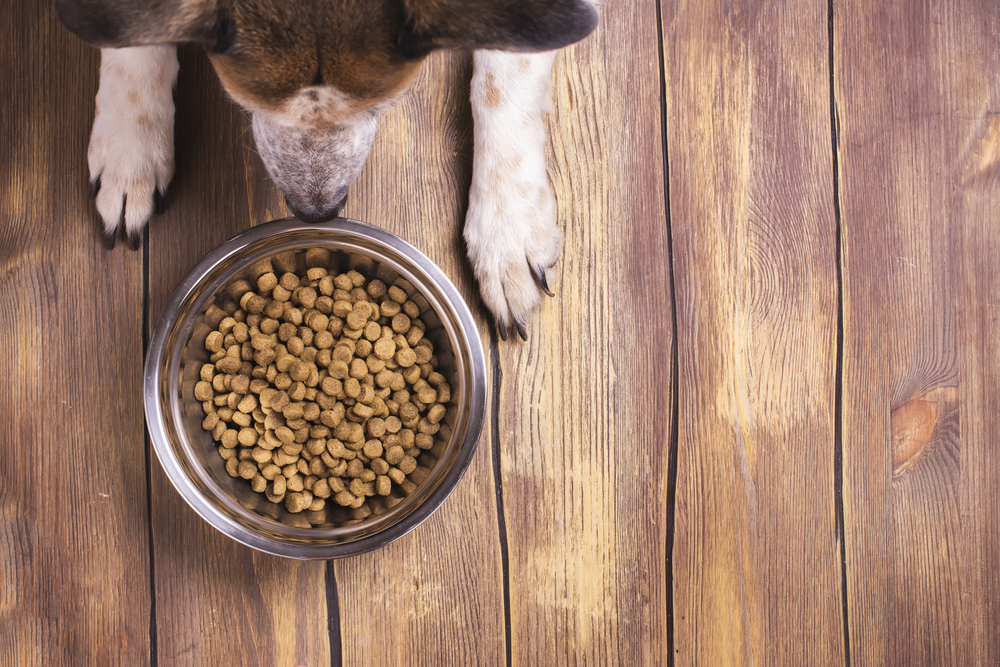Pet parents spend between $1,400 and $4,300 per year on their dogs, with the cost of food being one of the largest contributing factors. If you’ve ever found yourself Googling search terms like “best dog food for the best price,” you’re not alone. Unfortunately, recent dog food recalls have driven many pet parents to make their own dog food.
But there’s another solution. It may be time to think about signing up for a subscription box for your pup. In addition to providing top-of-the-line dog food, the best dog food packages save you hours of research and food prep. These dog food subscriptions are the best of the best, according to fellow pet parents.

1. Chewy
Does your fur baby already have a favorite food? By now, you’ve probably considered ordering it online, but did you know Chewy offers an automatic subscription? In addition to your pup’s favorite noshes, you’ll be able to stock up on treats, bedding, and even holiday costumes at this online big-box retailer for pets. Whether you need dog shampoo, potty pads, or a new squeaky toy, Chewy offers 5%–10% discounts on some of your favorite brands. Additionally, you’ll be able to set up your shipment frequency, save 30% on your first subscription order, and you’ll receive free shipping on every order over $49.

2. Nom Nom
There are perks to making your own dog food, but wouldn’t it be even better if you could essentially get someone else to make it for you? With Nom Nom, you’ll be able to specifically tailor your dog’s meal plan to his age and size. The result? Freshly made meals packed with nutritious ingredients in the ideal portion size for your beloved fur baby. Nom Nom also offers treats and nutritional supplements, so you can rest assured that you’re meeting all of your pooch’s dietary needs. Choose from one of four recipes crafted to meet AAFCO Food Nutrient Profiles, and you’ll receive carefully packaged dishes that make serving dinner a snap. While it’s not the cheapest service (monthly costs range from $49 to $328), we love the option of choosing from weekly, biweekly, and monthly deliveries. Nom Nom is currently offering 20% off if you start your two-week trial today.
3. The Farmer’s Dog
As pet parents, we know our fur babies are all unique, and The Farmer’s Dog agrees. You’ll be able to create a personalized profile and select food based on your pooch’s age, breed, ideal weight, activity level, and even food allergies. Using fresh, human-grade ingredients, The Farmer’s Dog dishes out nutritionally dense meals in easy-to-open packages. They’re currently offering 50% off your first purchase if you subscribe now, and you can choose the frequency of your deliveries. Average weekly costs range from $16 to $90, depending on your dog’s breed and the number of pups you’re feeding.
4. Spot and Tango
If you’ve ever questioned the quality of ingredients used in dog food, Spot and Tango may be the subscription box for you. Using locally farmed, human-grade ingredients, Spot and Tango offers pups a farm-to-table approach to mealtime. Once Spot and Tango has your pooch’s age, weight, and activity level, the company sends out nutritionist-developed fresh dog food in perfectly proportioned, vacuum-sealed containers. Your pup’s meals arrive frozen, so all you have to do is thaw them out, pop open the container, and feed your fur baby a fresh, nutritionally balanced meal. Meals are delivered every week and cost an average of $2 per meal. For a limited time, new users will receive 50% off the cost of a subscription and free dog treats for life.
5. Pet Plate
While many dog food brands rely on meat by-products to bulk up their lackluster recipes, Pet Plate believes in providing the best quality to pooches nationwide. Pet Plate provides human-grade, USDA meats prepared using vet-crafted recipes. Choose from beef, chicken, turkey, or lamb, and serving your pup’s meal is as easy as opening a container and dishing out meals. Input your pup’s age, breed, weight, and health level, and you’ll receive a weekly delivery of healthy meals starting as low as just $1 per day. Best of all, new subscribers will get 50% off meals and treats.

Ordering high-quality, nutrient-dense food for your pooch doesn’t have to cost a small fortune, and we’ve rounded up the most highly rated dog food subscriptions to prove it. With one of our favorites, you’ll save yourself time, effort, and several shopping trips all with the touch of a button. Your beloved pooch’s new favorite food is only a click away, and you can have it delivered right to your doorstep. What could be easier than that?



